10 Fantastic Photo Locations in Glacier National Park
Many people visit Glacier National Park to drive the spectacular Going-to-the-Sun Road, see wildlife and go hiking. Photography in Glacier National Park, one of the most spectacular U.S. national parks, is another popular thing to do.
It’s basically impossible to visit this park and not return home with a bunch of amazing photos. Even with a basic camera or a smartphone, you can take some epic photos in Glacier National Park.
In this Glacier National Park photography guide, I’ll tell you about the best places to take photos in Glacier and provide some ideas for what to photograph, from waterfalls and wildlife to sunrises and starry night skies.
Glacier National Park Photography Guide
If you’re a bit more serious about photography than the average visitor, you might plan your trip around visiting the best photo locations in Glacier National Park.
As you probably know, early morning and late evening are prime times for landscape photography. Get up before dawn to catch a stunning sunrise—and find a parking spot in summer—or wait until sunset for amazing light.
Additionally, both dawn and dusk are when wildlife, such as moose, bighorn sheep and especially bears, are most active. You have the best chance of spotting these iconic animals in the hour or two after sunrise or before sunset.

This post about the best photo locations in Glacier National Park contains affiliate links. You can read more about our Terms of Use / Disclosure here.
What to Photograph in Glacier National Park
Glacier is a photographer’s paradise. From waterfalls, wildflowers and wildlife to sunrises, sunsets and star-peppered night skies, whatever kind of landscape photography you’re into, you’ll find numerous subjects and spots for photography in Glacier National Park.
- Waterfalls: Lake McDonald Falls, Haystack Falls, Baring Falls, St. Mary Falls, Virginia Falls, Redrock Falls and Apikuni Falls
- Wildlife: Black and grizzly bears, moose, mountain goats and bighorn sheep
- Wildflowers: Meadows at Logan Pass, Preston Park, Many Glacier Road and St. Mary Prairie
- Sunset on the West Side: Lake McDonald
- Sunrise on the East Side: St. Mary Lake, Swiftcurrent Lake and Two Medicine Lake
- Glaciers: Jackson Glacier, Grinnell Glacier, Sexton Glacier and Sperry Glacier
- Night Skies: stars and/or northern lights at Lake McDonald, St. Mary Lake and Visitor Center, and Logan Pass. “Half the park is after dark.”
Stunning Photo Locations in Glacier National Park
If you’re looking for the best photo locations in Glacier National Park, check out the list of my personal favorites below. Almost all of them are at their most beautiful in the morning and/or evening.
Plan your trip well and explore these Glacier National Park photo spots at those times of day for the best photography conditions. I’d also recommend doing your Glacier National Park hiking then, particular in mid-summer when afternoons in the mountains can get very hot.
I’ve ranked these Glacier photography locations from west to east (roughly), starting at Lake McDonald on the West Side and ending on Many Glacier’s Grinnell Glacier Trail on the East Side.
1. Lake McDonald
Great for: reflections and sunset photography in Glacier National Park
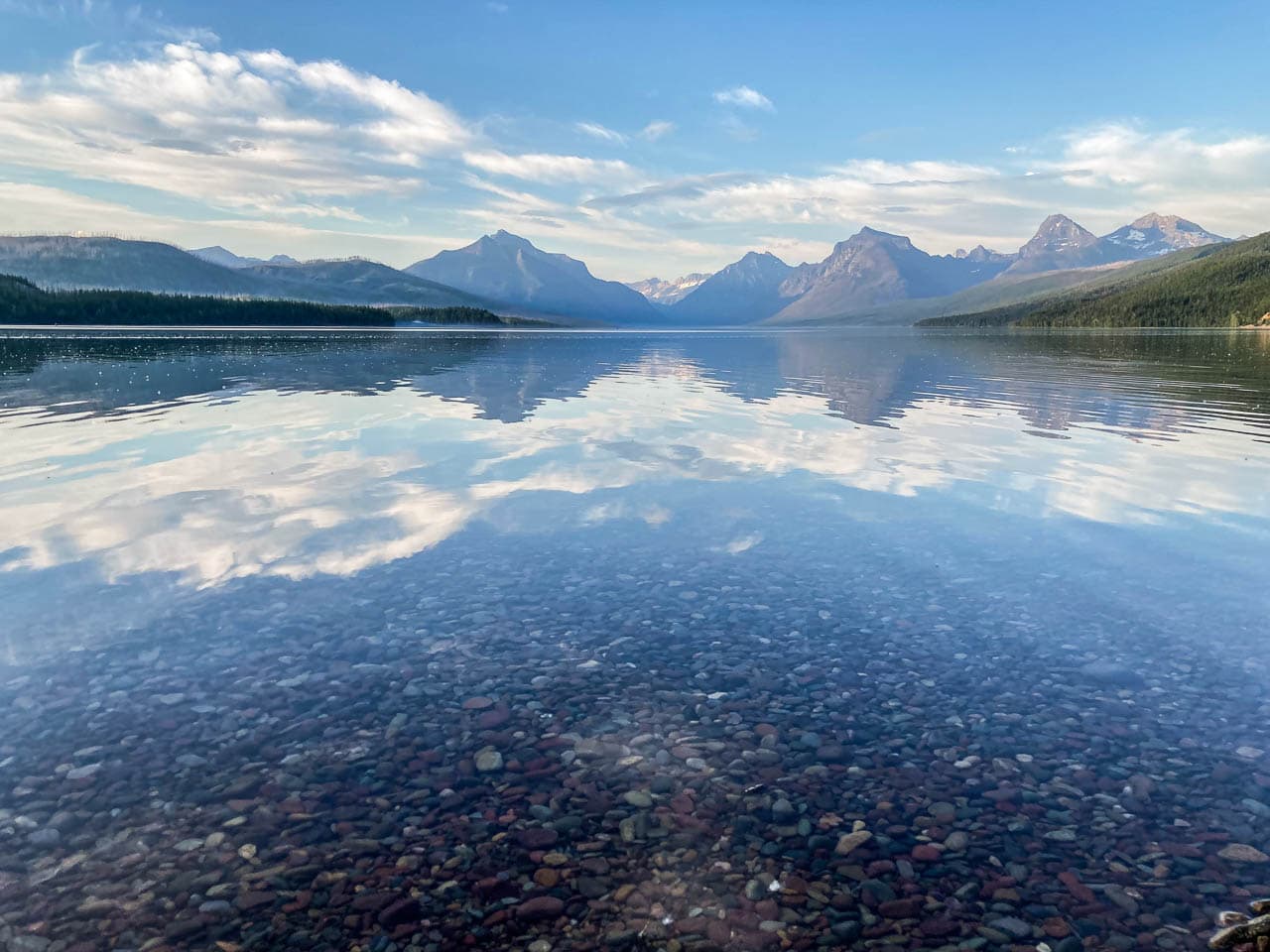
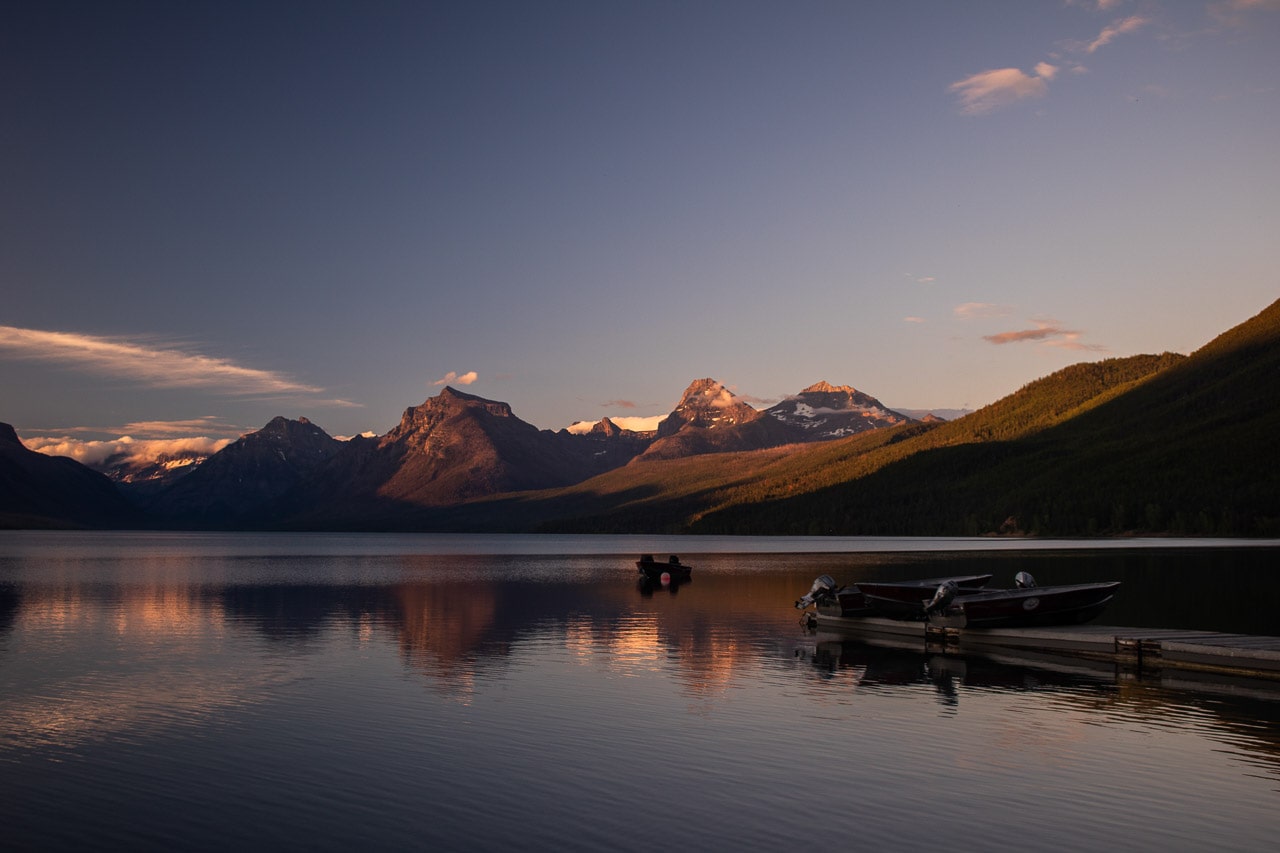
The largest lake in Glacier National Park, Lake McDonald is 10 miles (16 km) long and almost 500 feet (152 m) deep. A direct result of glacial carving, the lake is surrounded by tall peaks and the forested slopes of its U-shaped valley.
This is the main hub of the park’s West Side, home to the bustling Apgar Village, the iconic Lake McDonald Lodge and a few campgrounds. Lake McDonald is also one of the best places to photograph the sunset in Glacier National Park.
From Apgar on its southwestern shore, there’s a fantastic view of the majestic peaks on the lake’s other end, which are lit up by the evening sun.
Additionally, Lake McDonald is famous for its colorful pebbles and crystal-clear, often reflective, water, which makes for unique photos.
- Stay here: Lake McDonald Lodge or Apgar Village
- Camp here: Apgar Campground
2. McDonald Creek
Great for: intimate scenery, forest and water photography in Glacier National Park
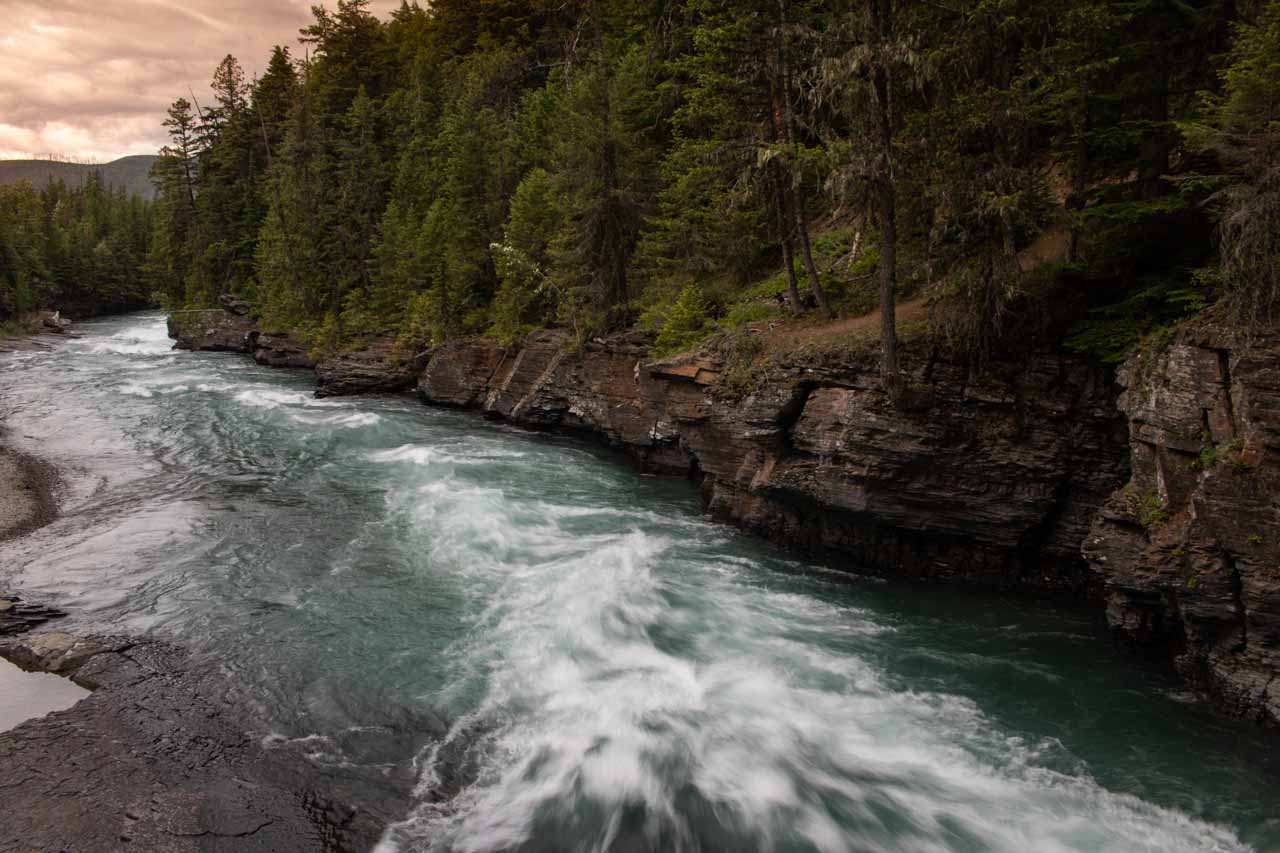
For many people, McDonald Creek is nothing more than a quick stopping point along the western section of the Going-to-the-Sun Road. A couple of parking areas offer views of places like McDonald Falls and Sacred Dancing Cascades.
This is easily one of the most underrated photo locations in Glacier National Park. Less spectacular than the park’s cliffs and peaks, abundant wildlife or colorful wildflower meadows, McDonald Creek is a great place to take some more “intimate” photos of Glacier National Park.
Focus on details like the flow of the water, the textured rocks on the creekbank, small pebbly beaches, verdant forest scenery.
- Stay here: Lake McDonald Lodge or Apgar Village
- Camp here: Apgar Campground, Sprague Creek Campground or Avalanche Campground
3. Big Bend
Great for: sunset and wildflower photography in Glacier National Park
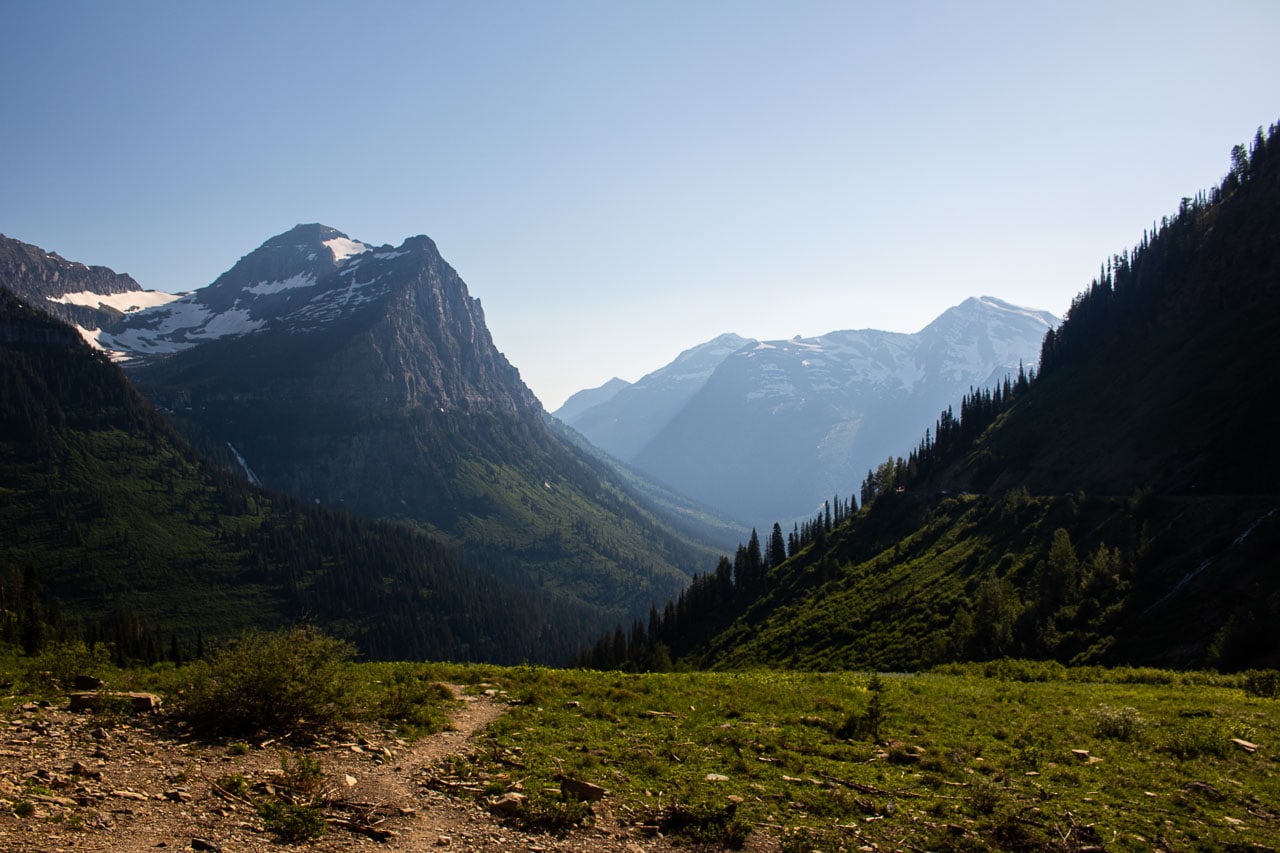
One of the most popular spots to enjoy the sunset in Glacier National Park’s heart, Big Bend on the Going-to-the-Sun Road is, well, a big bend in the road.
When coming from the west, it is just past the remarkable Weeping Wall. A large parking lot makes it impossible to miss and indicates its popularity among visitors. You definitely won’t be alone here.
Take your time here—the panorama is truly world-class—and watch the sun rays, shadows and colors shift along the cliffs and peaks across the valley. The view includes Mount Oberlin, Cannon Mountain, Heavens Peak and Clements Mountain.
If you’re at this epic Glacier National Park photo location in mid-summer, you’ll also be treated to a magnificent display of wildflowers.
This is one of the greatest views on the Going-to-the-Sun Road, but I do have to say that it’s a challenge to come up with an original composition here. It’s all about the sprawling landscape before you, which has been photographed many millions of times.
- Stay here: Lake McDonald Lodge, Rising Sun Motor Inn or St. Mary Village
- Camp here: Avalanche Campground, Rising Sun Campground or St. Mary Campground
4. Logan Pass
Great for: sunrise, sunset, wildflowers and wildlife photography in Glacier National Park
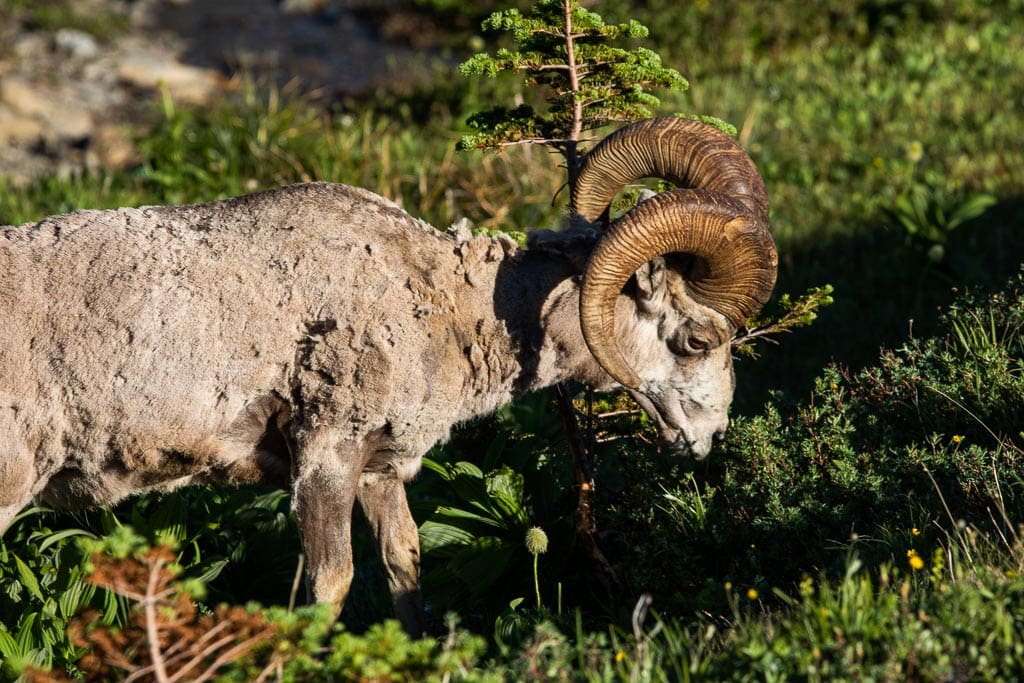
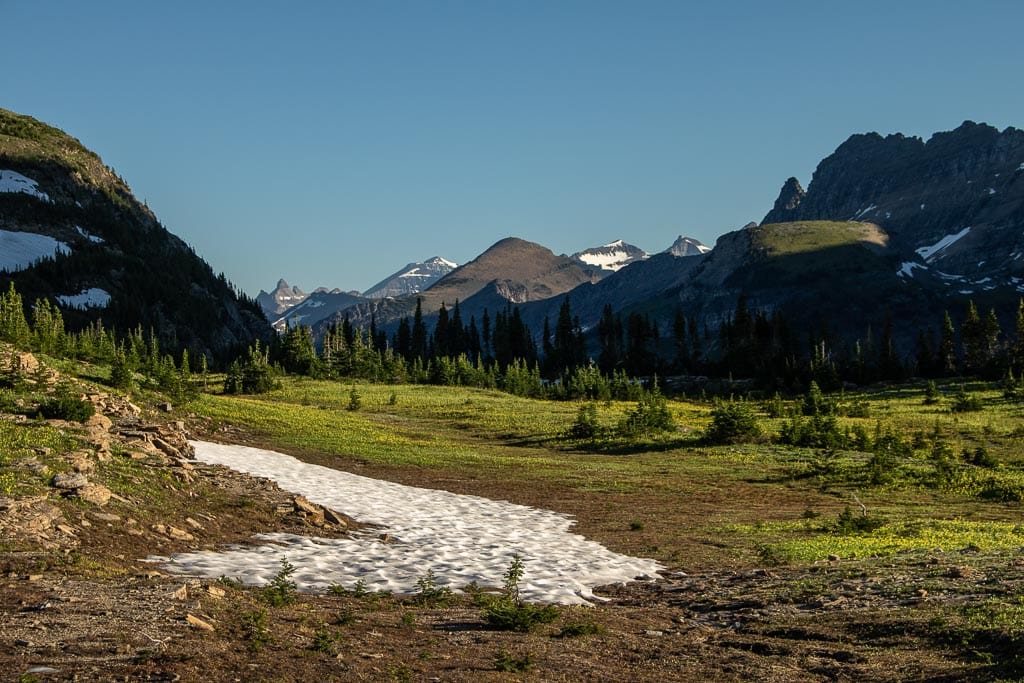
The ultimate destination for many visitors to Glacier, Logan Pass is the highest point on the Going-to-the-Sun Road (6,646 feet / 2,205 m). When the road is open, usually from late-June through mid-October, this is an extremely busy place. In mid-summer, the parking lot is typically full between 8 am and 4.30 pm.
This shouldn’t be an issue for photographers in Glacier National Park, though. You should be at Logan Pass at 6 or 7 am anyway for “golden hour.” Those early-morning rays light up the mountains beautifully, providing superb photo opportunities.
Enjoy the views from nearby Oberlin Bend Overlook, stroll the interpretive trail at the Logan Pass Visitor Center or just take in the panorama from the parking lot itself.
In addition to stunning wildflowers and wonderful sunrises and sunsets, Logan Pass is also one of the top locations to see wildlife in Glacier National Park. So, thanks to its variety, it’s easily one of the best Glacier photo locations.
At Logan Pass, you’ll almost certainly see bighorn sheep, while mountain goats are very common as well. If you’re patient (and lucky), you might spot a grizzly bear lumbering through the meadows, too.
- Stay here: Lake McDonald Lodge, Rising Sun Motor Inn or St. Mary Village
- Camp here: Avalanche Campground, Rising Sun Campground or St. Mary Campground
5. Hidden Lake Overlook
Great for: sunrise, sunset, wildflowers and wildlife photography in Glacier National Park

The Hidden Lake Overlook is also at Logan Pass, but worth zooming in on. This is one of my favorite shorter hikes in Glacier National Park, a stunning walk across colorful alpine meadows to one of Glacier’s most famous viewpoints.
The trail starts just behind the Logan Pass Visitor Center and combines boardwalks, to protect the fragile flowers underneath, and gravel. It is absolutely glorious at sunrise, when crowds are at their smallest and animal at their most active.
As the trail climbs to the Hidden Lake Overlook, you can enjoy panoramic views of Logan Pass and see ancient rock layers in the cliffs of Clements Mountain to your right.
The upper section of the trail features small waterfalls and reflective moraines, as well as excellent opportunities to see mountain goats and bighorn sheep.
From the platform at Hidden Lake Overlook, one of Glacier’s most iconic views sprawls before you: Hidden Lake backed by striking Bearhat Mountain. A top photo location in Glacier National Park indeed.
- Stay here: Lake McDonald Lodge, Rising Sun Motor Inn or St. Mary Village
- Camp here: Avalanche Campground, Rising Sun Campground or St. Mary Campground
6. East Tunnel Pullouts
Great for: sunrise and sunset photography in Glacier National Park
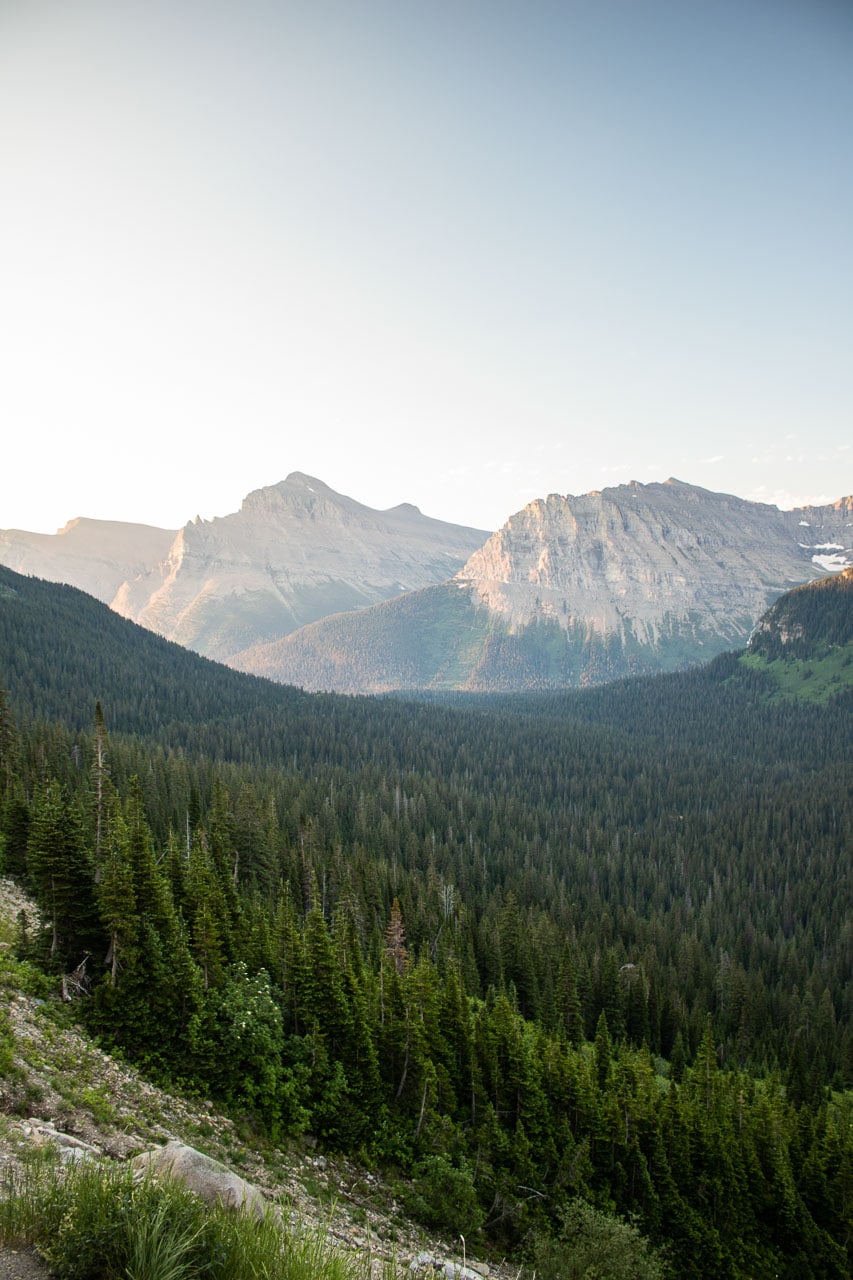
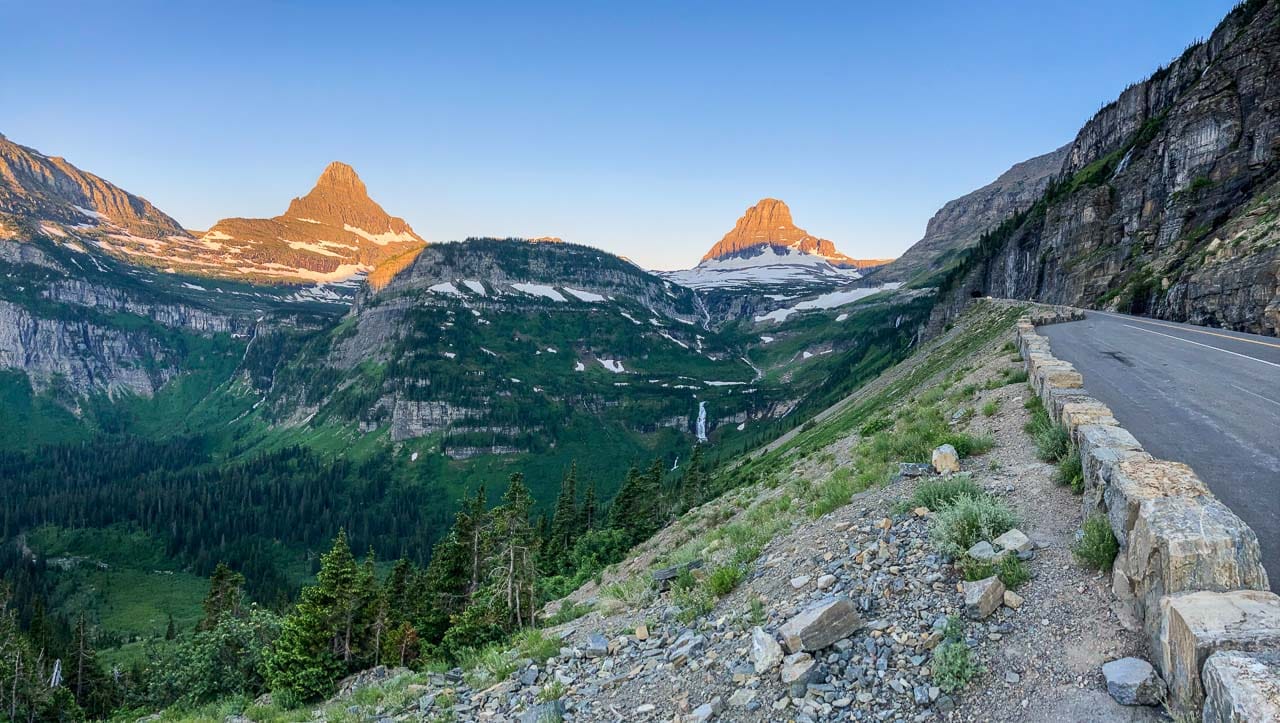
While literally all overlooks and pullouts on the Going-to-the-Sun Road are worth stopping at, I personally love those below the East Tunnel most. To the east of Logan Pass, the East Tunnel is the larger of the road’s two tunnels.
This 408-feet (124 m) tunnel was excavated entirely by hand, an impressive man-made feature in a landscape dominated by majestic peaks and deep valleys. The pullouts are on the downhill side of the tunnel and offer a great view of Going-to-the-Sun Mountain, after which the road was named.
Looking up toward Logan Pass, the panorama takes in Mount Reynolds and Clements Mountain, their peaks lit up in the morning by the day’s first sun rays. It is one of the best views in the national parks.
The East Tunnel pullouts are especially amazing for sunrise photography in Glacier National Park, although the scenery is almost as stunning in the evening as well.
- Stay here: Lake McDonald Lodge, Rising Sun Motor Inn or St. Mary Village
- Camp here: Avalanche Campground, Rising Sun Campground or St. Mary Campground
Quick note on accommodation: The previous four photo locations in Glacier National Park are either at or near Logan Pass in the park’s heart. Besides chalets that require long hikes, there are no accommodations or campgrounds in this area. The nearest places to stay are at Lake McDonald to the west or St. Mary Lake to the east. For Glacier National Park photography at sunrise, it’s important to account for a half hour or more of driving in the morning to get there.
7. St. Mary and Virginia Falls
Great for: waterfall photography in Glacier National Park
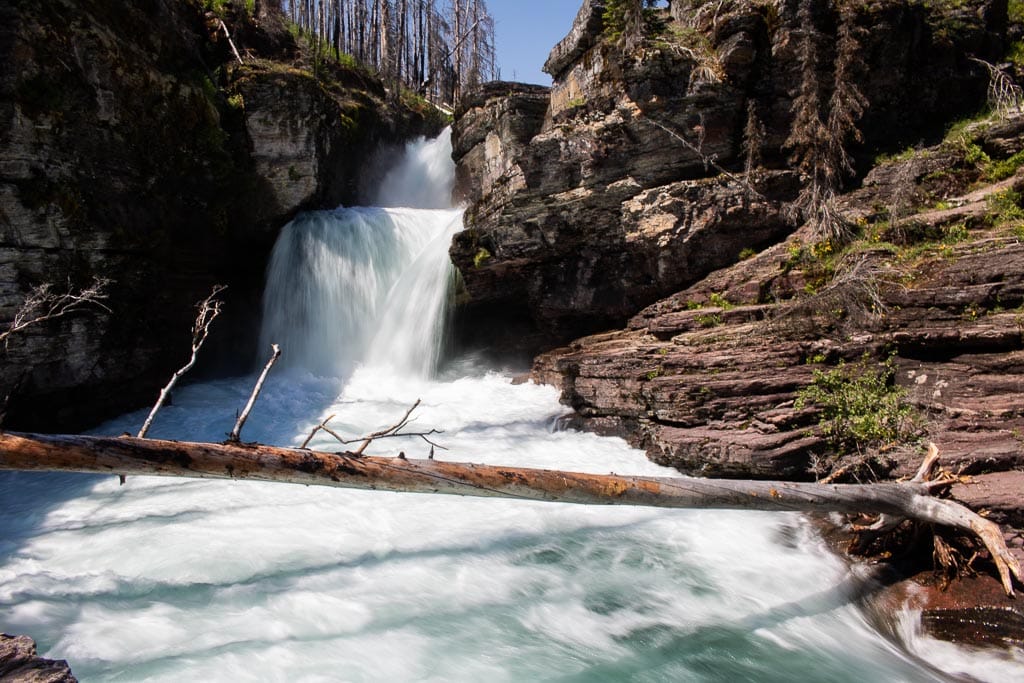
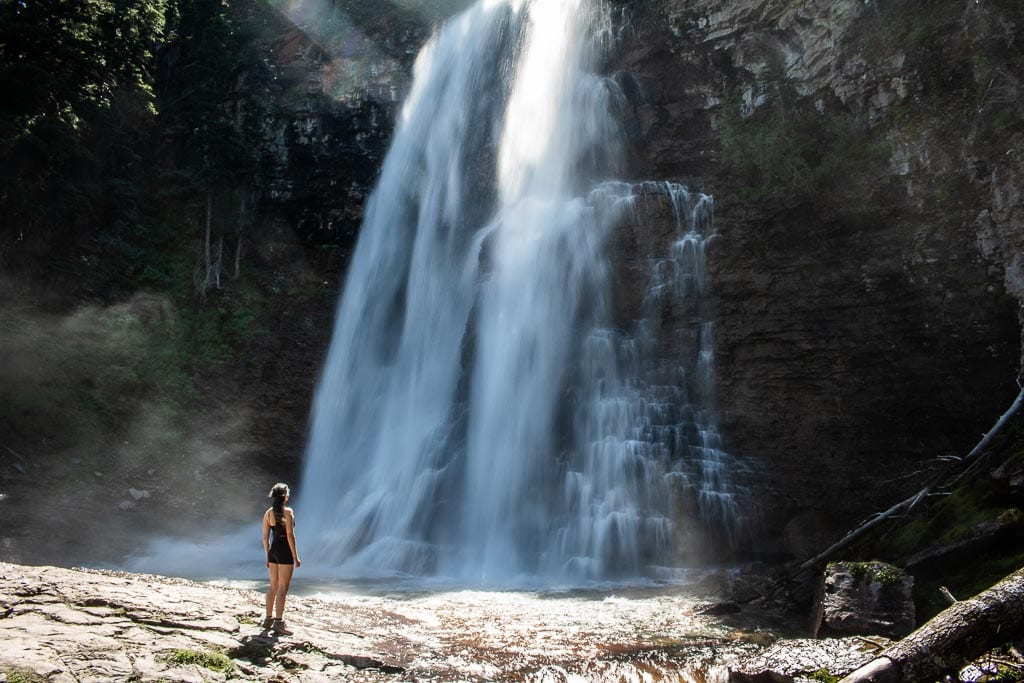
If you’re looking for places to photograph waterfalls in Glacier National Park, you’ll find a few options on the Going-to-the-Sun Road—Haystack Falls and Lunch Creek Falls are both really beautiful.
My favorite waterfalls in Glacier, however, are St. Mary and Virginia Falls. In addition to how scenic they are, I like them so much because they’re on the same hiking trail.
A 1.6-mile (or 1.8-mile depending on where you start) trail leads up to Virginia Falls near the head of St. Mary Lake. On the way, you’ll pass another waterfall, St. Mary Falls, which is famous for its blue water, small gorge and scenic wooden bridge. Between the two falls, several cascades also provide beautiful photo opportunities.
Virginia Falls is a wonderful picnic spot, whether you’re sitting at the base of the upper falls or at the smaller lower falls.
Often windy, there’s a constant spray of water droplets flying around, offering sweaty hikers the chance to cool off a bit on a hot summer’s day. Photographers, on the other hand, will find it a challenge to keep their lenses spot-free. If you’re attentive and careful, you can take some amazing pictures at this Glacier National Park gem.
- Stay here: Rising Sun Motor Inn or St. Mary Village
- Camp here: Rising Sun Campground or St. Mary Campground
8. Wild Goose Island Overlook
Great for: sunrise photography in Glacier National Park
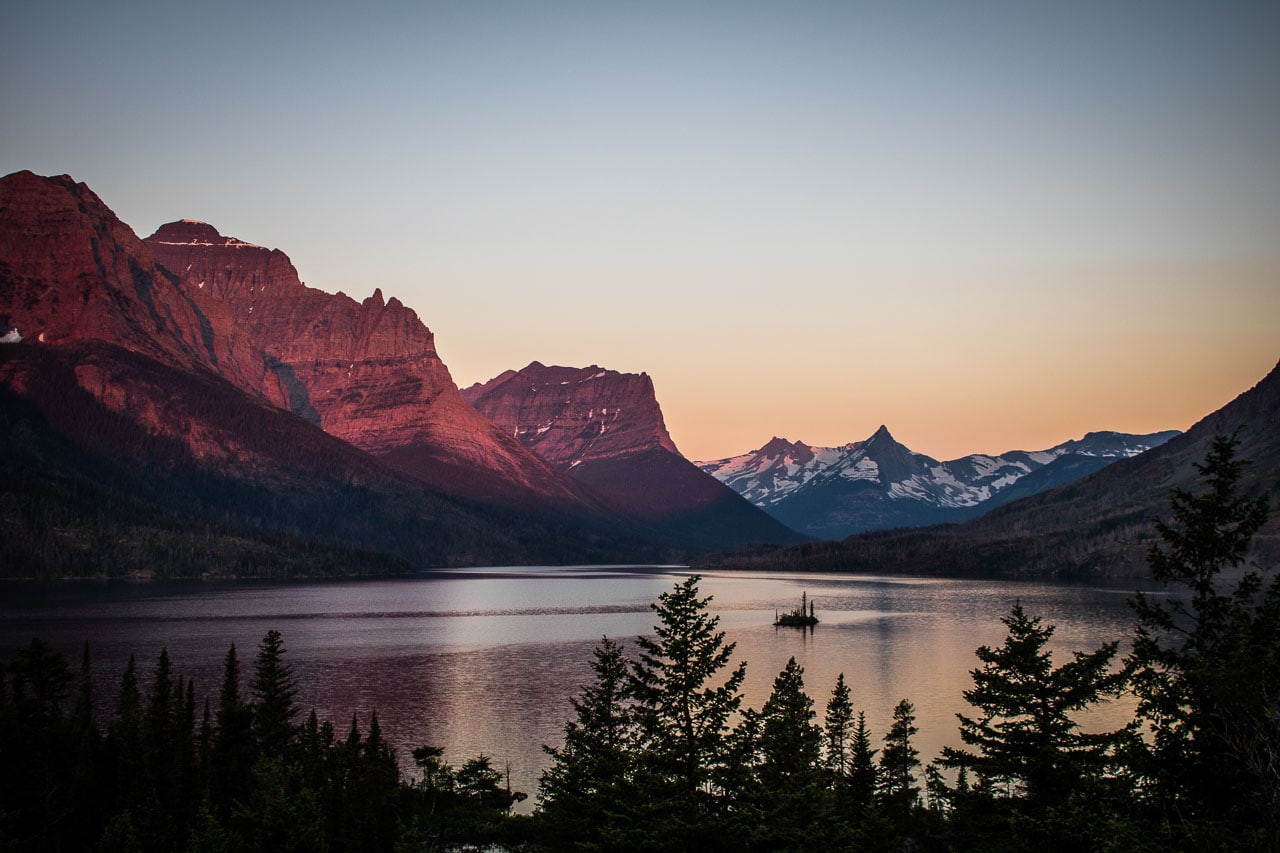
A bucket-list photography location in Glacier National Park, little Wild Goose Island is one of the park’s most photographed spots.
From the overlook, trees offer a beautiful frame for this striking islet in the massive body of water that is St. Mary Lake, while the Continental Divide provides a spectacular background.
At the center of the backdrop, Fusillade Mountain somewhat mirrors the shape and trees of Wild Goose Island, the complementary focal points of your photograph. Because the Wild Goose Island Overlook faces west, it’s one of the best places to take photos in Glacier National Park in the morning.
Just before sunrise, the magnificent peaks surrounding the lake begin lighting up in hues of pink, purple and red. A yellow-orange glow in the distant sky balances out the sunrise colors, creating a perfect palette of daybreak tints.
Surprisingly, you might not have to share this marvelous sunrise photography spot in Glacier National Park with many other people.
Undoubtedly, there will be some other photographers there at sunrise, but most visitors will be either still asleep or on their way to Logan Pass to grab a parking spot early in the morning.
- Stay here: Rising Sun Motor Inn or St. Mary Village
- Camp here: Rising Sun Campground or St. Mary Campground
9. Swiftcurrent Valley
Great for: sunrise, wildflowers and wildlife photography in Glacier National Park
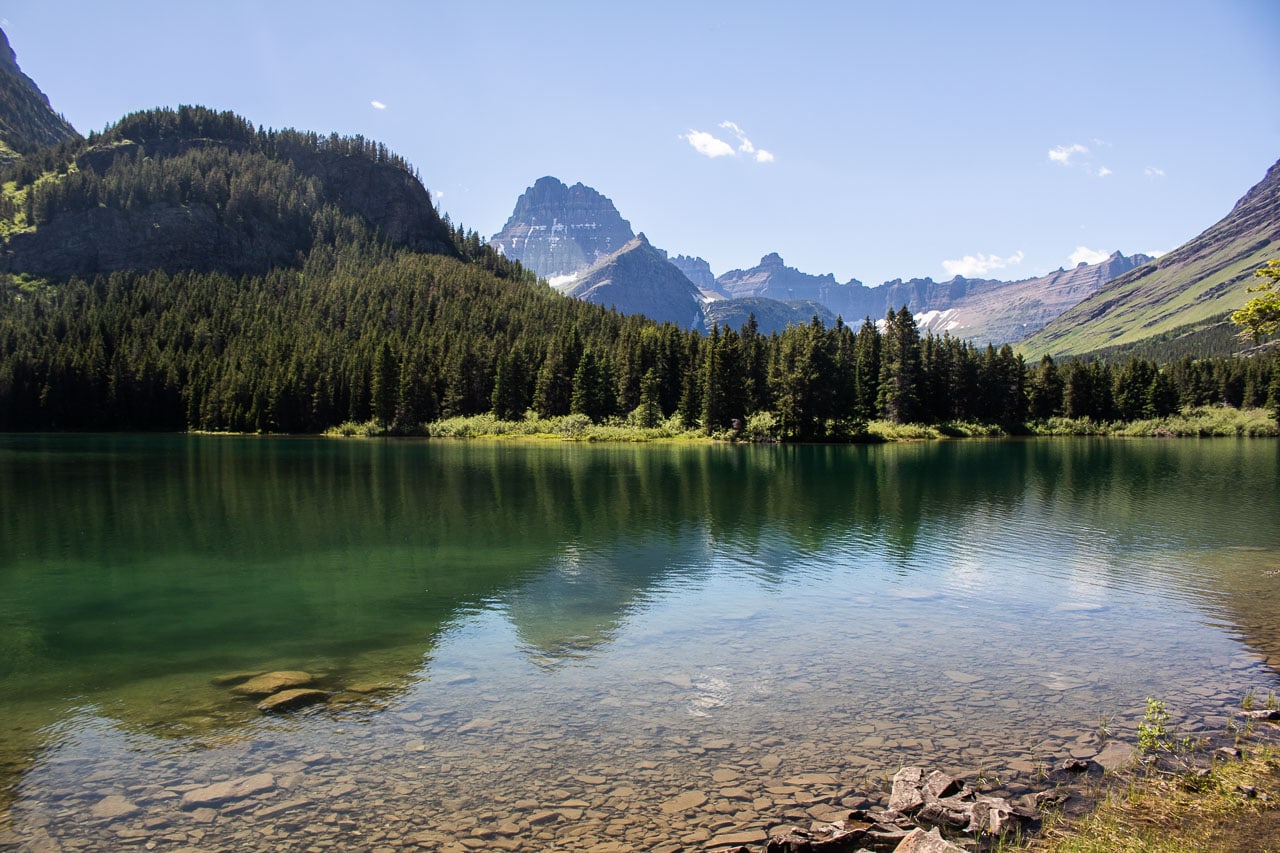
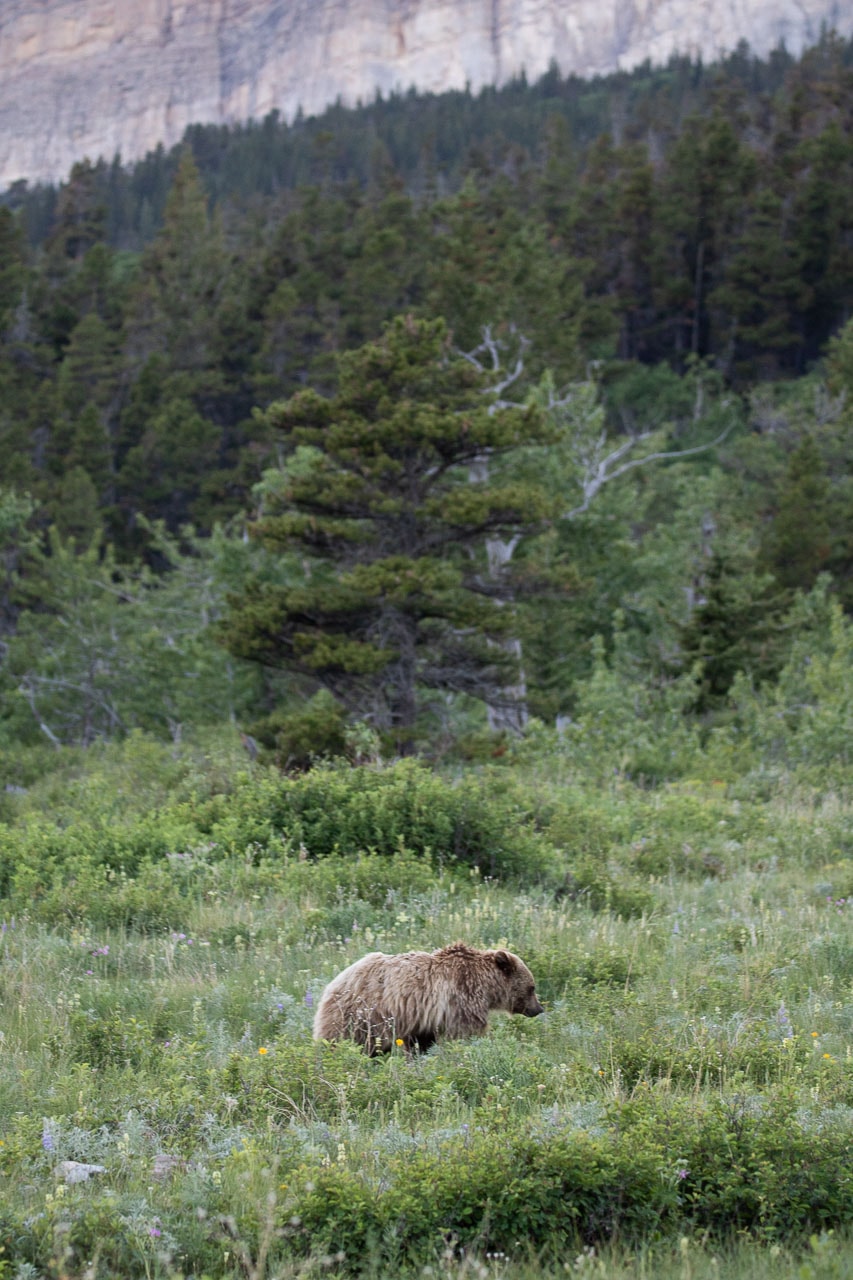
The Swiftcurrent Valley is the heart of Many Glacier, a series of stunning lakes, meadows, forests and enormous cliffs. Additionally, this area is also considered as one of Glacier’s wildlife havens.
You can often see iconic animals just by driving the Many Glacier Road or setting up a spotting scope at the Swiftcurrent Picnic Area or Many Glacier Hotel, one of the greatest places to stay in Glacier National Park.
During my two days in Many Glacier, I saw two grizzly bears and no fewer than four black bears, along with bighorn sheep.
Mountain goats are common sights at higher elevations, while pikas and even wolverines can occasionally be seen, too. Moose hang out on riverbanks and lakeshores, especially Swiftcurrent Lake, Fishercap Lake and Redrock Lake
On top of that, Swiftcurrent Lake is one of the most beautiful lakes I’ve ever seen. From the Many Glacier Hotel on its northeast shore, there’s an interrupted view of the surrounding mountains and arêtes, with Grinnell Peak as the dominant centerpiece.
This is easily one of the best photo locations in Glacier National Park for sunrise photos.
- Stay here: Many Glacier Hotel or Swiftcurrent Motor Inn
- Camp here: Many Glacier Campground
10. Grinnell Glacier Trail
Great for: general landscape, wildflower and wildlife photography in Glacier National Park
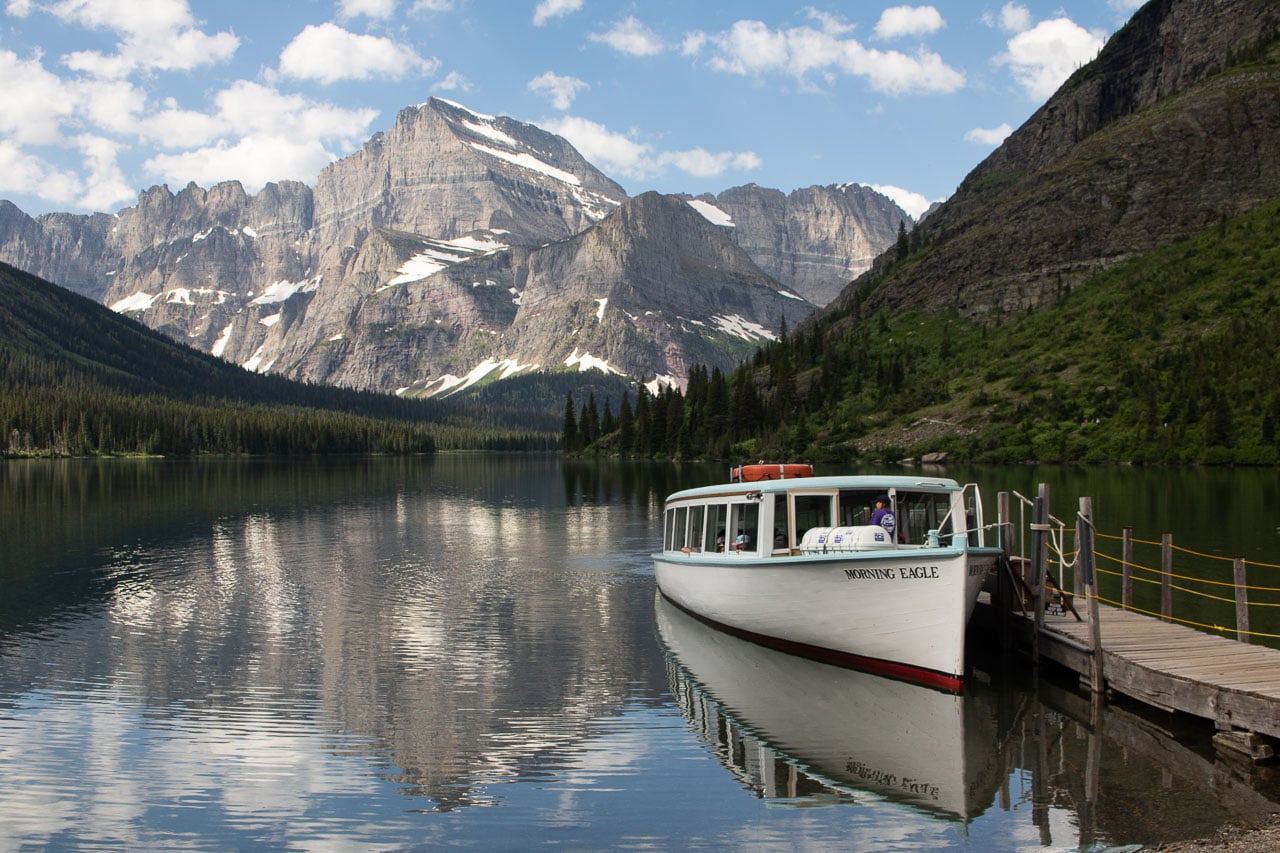
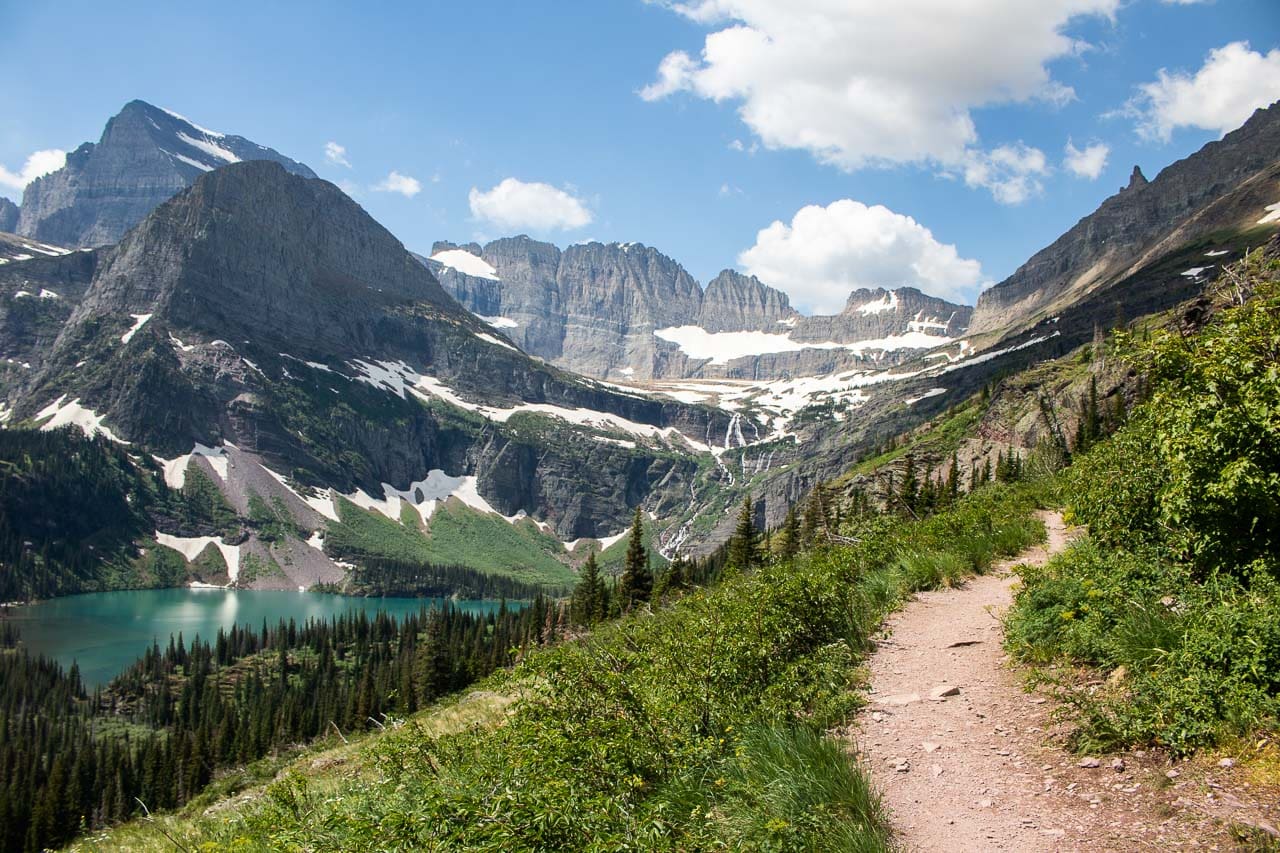
There are many epic hiking trails in Many Glacier, including such famous hikes as Iceberg Lake and Swiftcurrent Pass. However, when considered solely for Glacier National Park photography purposes, I recommend hiking the Grinnell Glacier Trail.
This sensational hike takes in two beautiful lakes, Swiftcurrent Lake and Lake Josephine, both home to healthy bear and moose populations, and ends at Grinnell Glacier.
From the Swiftcurrent Picnic Area or Many Glacier Hotel, hike along Swiftcurrent Lake and the north shore of Lake Josephine until the junction at Lake Josephine’s west end.
There, the Grinnell Glacier Trail splits off and runs directly uphill. After a short distance, views of Grinnell Lake below begin opening up to your left. Once you’re well above the tree line, the vista gets nothing less than awe-inspiring.
Following a cliffside above Grinnell Lake, you’ll continue toward Grinnell Glacier itself, accompanied by views of Gem Glacier and Salamander Glacier. The last section of the Grinnell Glacier hike is usually closed until early-July, but when it’s open, it leads to the park’s only accessible glacier.
From start to finish, this trail is packed with amazing photo ops. Whether it’s lakeside scenery at Swiftcurrent Lake or Lake Josephine, mountainscapes above the tree line, or extraordinary glacier views, this is one of the best photography hikes and locations in Glacier National Park.
- Stay here: Many Glacier Hotel or Swiftcurrent Motor Inn
- Camp here: Many Glacier Campground
Wildlife Safety When Practicing Photography in Glacier National Park
It’s important to remember that Glacier National Park is very much a wilderness park. Even if the roads are crowded, trails busy and parking lots full, there’s always wildlife around. And some of those animals can be quite dangerous.
Even when set up at a roadside overlook in the morning or evening, you should be aware of your surroundings. Always carry bear spray and know how to use it. Make noise while hiking and don’t hike alone.
Grizzly bears are probably the most dangerous, and perhaps feared, animal in Glacier National Park, but remember that other, seemingly calm wildlife can injure you as well. Moose, mountain goats and bighorn sheep have all hurt people in the park, sometimes severely. Keep your distance.
Park rules say that you must stay at least 100 yards away from bears and wolves, and a minimum of 25 yards from all other wildlife.
Read the following wildlife safety guides for more information about individual animals and how to deal with encounters.







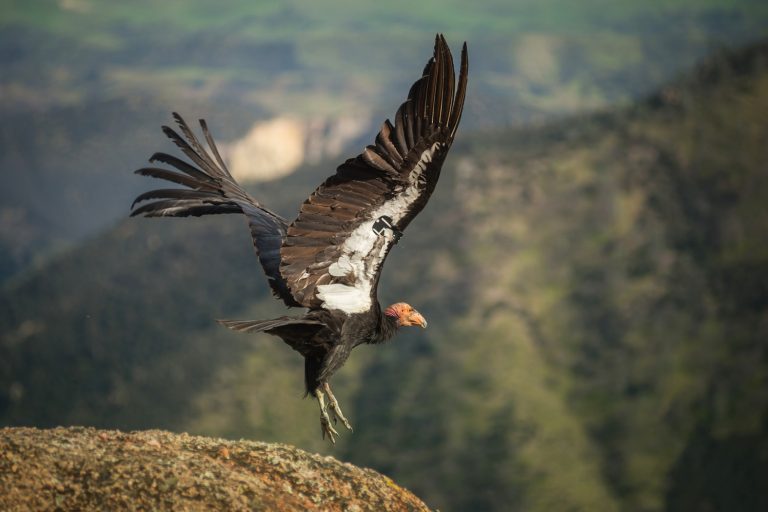

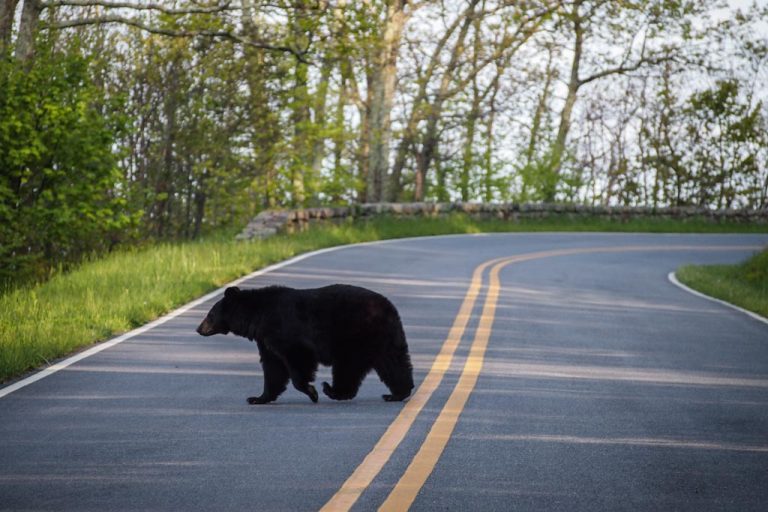


Nice selection of very good photos and information about each location. Thank you.
Thanks, Larry, I’m glad you enjoyed it!